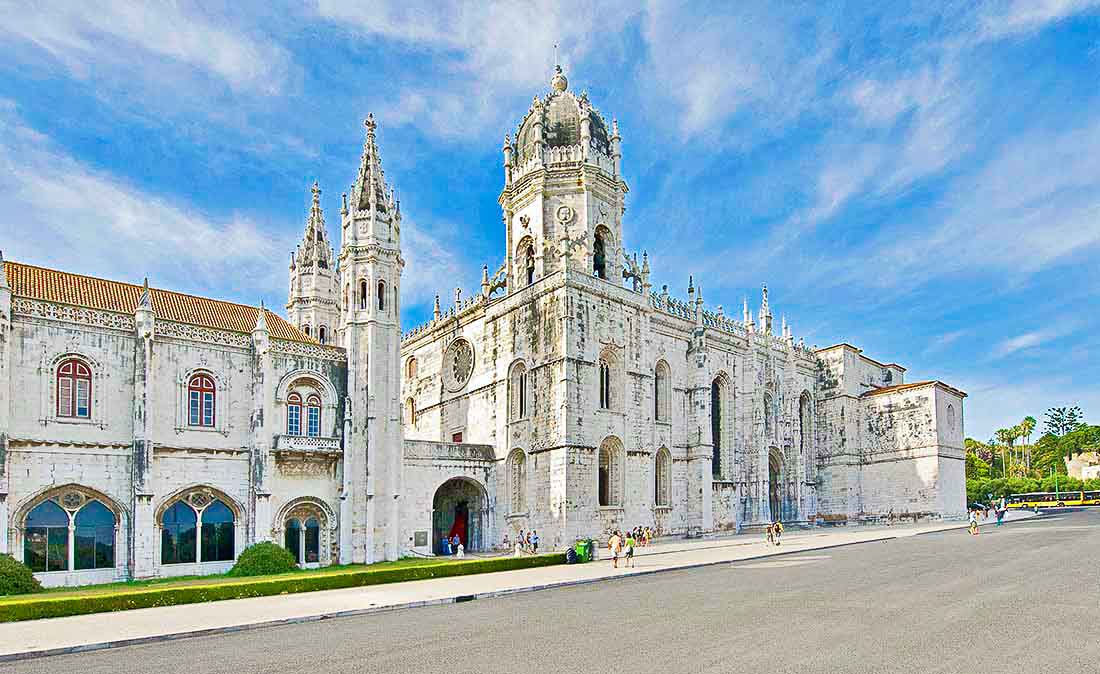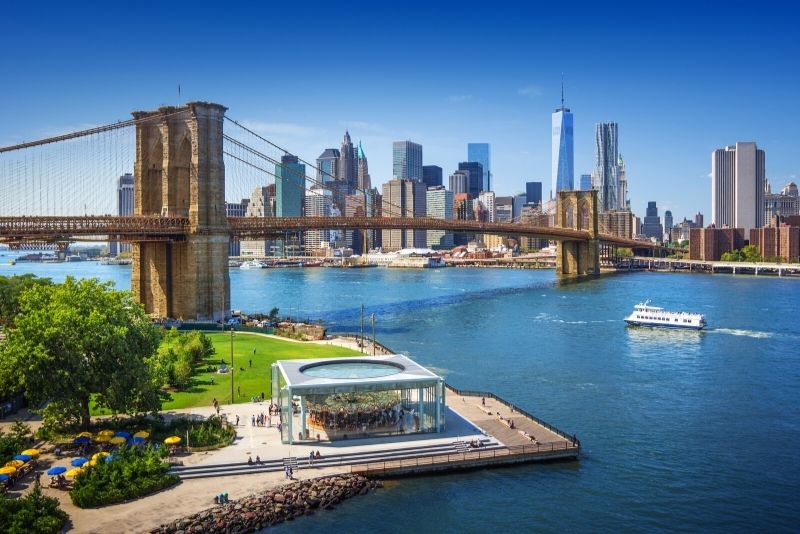
-
Table of Contents
Discover Lisbon’s architectural wonders: Belém Tower and Jerónimos Monastery.
Lisbon, the capital city of Portugal, is a vibrant and historic destination that offers a rich cultural experience. Among its many attractions, two notable landmarks stand out: the Belém Tower and the Jerónimos Monastery. These iconic structures showcase the city’s architectural beauty and historical significance, attracting visitors from around the world.
The Historical Significance of Belém Tower in Lisbon, Portugal
Lisbon, the capital city of Portugal, is a treasure trove of historical landmarks and architectural wonders. Among these, the Belém Tower and Jerónimos Monastery stand out as two of the most significant and iconic structures in the city. These magnificent buildings not only showcase the rich history of Lisbon but also hold great cultural and historical importance for the entire country.
The Belém Tower, also known as the Tower of St. Vincent, is a fortified tower located on the banks of the Tagus River. Built in the 16th century, during the height of the Portuguese Age of Discovery, the tower served as a defensive structure and a symbol of Portugal’s maritime power. Its strategic location at the entrance of the harbor made it an essential part of Lisbon’s defense system.
The tower’s architectural style is a blend of Gothic and Manueline, a uniquely Portuguese style characterized by intricate detailing and maritime motifs. The tower’s façade is adorned with delicate carvings of ropes, anchors, and sea monsters, reflecting Portugal’s maritime heritage. Visitors can explore the tower’s various levels, including the dungeons, the governor’s room, and the terrace, which offers breathtaking views of the river and the city.
Just a short walk away from the Belém Tower lies the Jerónimos Monastery, a masterpiece of Manueline architecture. This grand monastery was built in the 16th century to commemorate Vasco da Gama’s successful voyage to India. It served as a spiritual retreat for sailors departing on their voyages and as a place of worship for the monks of the Order of Saint Jerome.
The monastery’s façade is a stunning display of intricate stone carvings, depicting scenes from the Bible, maritime motifs, and symbols of Portugal’s royal power. The interior is equally impressive, with its soaring ceilings, ornate chapels, and the tomb of Vasco da Gama himself. The monastery’s church, the Church of Santa Maria, is a masterpiece of Gothic and Manueline architecture, with its intricate vaulted ceilings and beautiful stained glass windows.
Both the Belém Tower and Jerónimos Monastery have been recognized as UNESCO World Heritage Sites, highlighting their immense historical and cultural significance. These structures not only represent the architectural prowess of the time but also serve as a testament to Portugal’s golden age of exploration and discovery.
Visiting these historical landmarks allows visitors to immerse themselves in the rich history of Lisbon and Portugal. The Belém Tower and Jerónimos Monastery offer a glimpse into the country’s past, where brave explorers set sail to discover new lands and establish Portugal as a global power.
In conclusion, the Belém Tower and Jerónimos Monastery in Lisbon, Portugal, are two architectural marvels that hold immense historical and cultural significance. These structures not only showcase the architectural prowess of the time but also represent Portugal’s golden age of exploration and discovery. Visiting these landmarks allows visitors to delve into the rich history of Lisbon and Portugal, offering a unique glimpse into the country’s past.
Exploring the Architectural Marvel of Jerónimos Monastery in Lisbon, Portugal
Lisbon, the capital city of Portugal, is known for its rich history and stunning architecture. One of the most remarkable architectural marvels in Lisbon is the Jerónimos Monastery, located in the Belém district. This magnificent structure is a testament to the country’s past and a must-visit for anyone interested in history and architecture.
The Jerónimos Monastery, also known as the Hieronymites Monastery, was built in the 16th century during the reign of King Manuel I. It was constructed to commemorate Vasco da Gama’s successful voyage to India and to give thanks to the Virgin Mary for the safe return of the explorers. The monastery is a prime example of Manueline architecture, a Portuguese style characterized by intricate detailing and maritime motifs.
As you approach the monastery, you are immediately struck by its grandeur. The façade is adorned with delicate stone carvings depicting scenes from the Bible, as well as maritime elements such as ropes, anchors, and sea monsters. The intricate detailing is a testament to the skill and craftsmanship of the architects and artisans who worked on the monastery.
Stepping inside, you are greeted by a vast interior filled with light. The main church, with its high vaulted ceilings and ornate columns, is a sight to behold. The walls are covered in beautiful azulejos, traditional Portuguese blue and white tiles, depicting religious scenes and maritime motifs. The combination of the tiles and the natural light streaming through the windows creates a serene and peaceful atmosphere.
One of the highlights of the Jerónimos Monastery is the tomb of Vasco da Gama. Located in the church’s transept, the tomb is an elaborate masterpiece. It is made of white marble and adorned with intricate carvings depicting scenes from the life of the famous explorer. The tomb is a fitting tribute to da Gama’s achievements and serves as a reminder of Portugal’s golden age of exploration.
Adjacent to the church is the monastery’s cloister, a tranquil courtyard surrounded by two levels of arches. The arches are intricately decorated with maritime motifs, including ropes, shells, and sea creatures. The cloister is a perfect spot to take a moment of quiet reflection and admire the beauty of the monastery.
After exploring the Jerónimos Monastery, a visit to the nearby Belém Tower is a must. This fortified tower, also built in the Manueline style, was originally constructed as a defense system for the city’s harbor. It stands as a symbol of Portugal’s maritime power and is now a UNESCO World Heritage site.
The Belém Tower offers breathtaking views of the Tagus River and the surrounding area. From the top, you can see the vast expanse of the river and the cityscape of Lisbon. It is a perfect spot to capture stunning photographs and take in the beauty of the city.
In conclusion, the Jerónimos Monastery and Belém Tower are two architectural marvels that should not be missed when visiting Lisbon, Portugal. The monastery’s intricate detailing and serene interior provide a glimpse into Portugal’s rich history, while the Belém Tower offers panoramic views of the city. These two landmarks are a testament to the country’s past and a reminder of its maritime heritage. A visit to Lisbon would not be complete without exploring these magnificent structures.
Unveiling the Cultural Heritage of Lisbon through Belém Tower and Jerónimos Monastery
Lisbon, the capital city of Portugal, is a treasure trove of cultural heritage. One cannot fully explore the city without visiting two iconic landmarks – Belém Tower and Jerónimos Monastery. These architectural marvels not only showcase the rich history of Lisbon but also offer a glimpse into the country’s maritime past.
Belém Tower, also known as the Tower of St. Vincent, stands proudly on the banks of the Tagus River. Built in the 16th century, this fortified tower served as a defense system for the city and played a crucial role in protecting Lisbon from invaders. Its strategic location at the mouth of the river made it an ideal spot for monitoring incoming ships and controlling access to the city.
As you approach the tower, you are immediately struck by its imposing presence. The intricate Manueline-style architecture, characterized by ornate details and maritime motifs, is a testament to Portugal’s Age of Discovery. The tower’s façade is adorned with delicate carvings of ropes, anchors, and sea monsters, symbolizing the country’s maritime prowess.
Stepping inside, you are transported back in time. The tower’s interior is divided into several levels, each with its own purpose. The ground floor, once used as a prison, now houses a small exhibition showcasing the tower’s history. As you ascend the narrow spiral staircase, you reach the first floor, which served as the governor’s residence. The second floor, with its stunning views of the river, was used as a chapel. Finally, the rooftop terrace offers panoramic vistas of the surrounding area, allowing visitors to appreciate the tower’s strategic location.
Just a short walk away from Belém Tower lies the magnificent Jerónimos Monastery. This UNESCO World Heritage site is a masterpiece of Manueline architecture and a symbol of Portugal’s golden age. Built in the 16th century, the monastery was commissioned by King Manuel I to commemorate Vasco da Gama’s successful voyage to India.
The monastery’s façade is a sight to behold. Intricate stone carvings depict scenes from the Bible, as well as maritime motifs such as ropes, shells, and coral. The main entrance, adorned with statues of saints and apostles, leads you into the grandiose interior. The vast nave, with its soaring columns and ribbed vaults, creates a sense of awe and reverence.
One of the highlights of the monastery is the stunning cloister. The intricate stone carvings that adorn the columns and arches are a testament to the skill and craftsmanship of the artisans who worked on this masterpiece. The cloister also houses the tombs of several notable figures, including Vasco da Gama and poet Luís de Camões.
Visiting Belém Tower and Jerónimos Monastery is not just a journey through history; it is an opportunity to immerse yourself in the rich cultural heritage of Lisbon. These architectural gems tell the story of a nation that once ruled the seas and left an indelible mark on the world. So, the next time you find yourself in Lisbon, make sure to pay a visit to these iconic landmarks and experience the magic of Portugal’s past.In conclusion, Lisbon, Portugal is home to two iconic landmarks – the Belém Tower and the Jerónimos Monastery. These historical sites showcase the rich cultural heritage and architectural beauty of the city. The Belém Tower, a UNESCO World Heritage site, is a symbol of Portugal’s maritime past and offers stunning views of the Tagus River. The Jerónimos Monastery, also a UNESCO World Heritage site, is a masterpiece of Manueline architecture and houses the tombs of important Portuguese figures. Both landmarks are must-visit attractions for tourists seeking to explore Lisbon’s history and culture.









